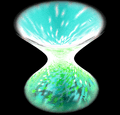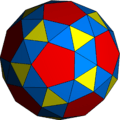Solid geometry facts for kids
Solid geometry is a part of geometry that studies three-dimensional shapes. Think of it as the math of the space around you! It helps us measure things like the volume (how much space something takes up) of different solid figures.
Some common solid figures you might know are pyramids, cylinders, cones, spheres, and prisms. Unlike plane geometry, which deals with flat shapes like squares and circles, solid geometry explores shapes that have depth, width, and height.
Contents
Who Studied Solid Geometry?
Many ancient thinkers were fascinated by solid shapes.
Ancient Greek Discoveries
- The Pythagoreans, a group of ancient Greek mathematicians, were very interested in regular solids. These are special 3D shapes where all faces are the same regular polygon, like a cube (which has square faces) or a tetrahedron (which has triangular faces).
- Later, thinkers known as the Platonists started to study other important shapes like the pyramid, prism, cone, and cylinder.
- A mathematician named Eudoxus made a big discovery. He proved that a pyramid or a cone has exactly one-third the volume of a prism or cylinder if they have the same base and the same height. Imagine filling a cone with water and pouring it into a cylinder of the same size – you'd need three cones to fill one cylinder!
Archimedes and His Formulas
Archimedes was another brilliant ancient Greek mathematician. He figured out and proved the formulas for the area and volume of many 3D shapes. One of his most famous works was called On the Sphere and the Cylinder.
Archimedes was so proud of his work on the sphere and cylinder that he asked for a carving of these two shapes to be placed on his tomb when he died. He specifically wanted a "right circular cylinder with height equal to its circumference" because it was important in his proofs.
Why is Solid Geometry Important?
Solid geometry is not just for mathematicians! People use it every day in many different jobs and activities:
- Engineering: Engineers use solid geometry to design buildings, bridges, cars, and even roller coasters. They need to calculate volumes, strengths, and how parts fit together.
- Architecture: Architects use it to plan the shapes and sizes of rooms and entire buildings.
- Computer Graphics: When you play video games or watch animated movies, the 3D characters and worlds are created using principles of solid geometry.
- Art: Artists use solid geometry to understand perspective and create realistic drawings and sculptures.
- Everyday Life: Even when you're packing a box, building with blocks, or trying to figure out how much water a swimming pool holds, you're using ideas from solid geometry!
Images for kids
See also
 In Spanish: Geometría del espacio para niños
In Spanish: Geometría del espacio para niños






